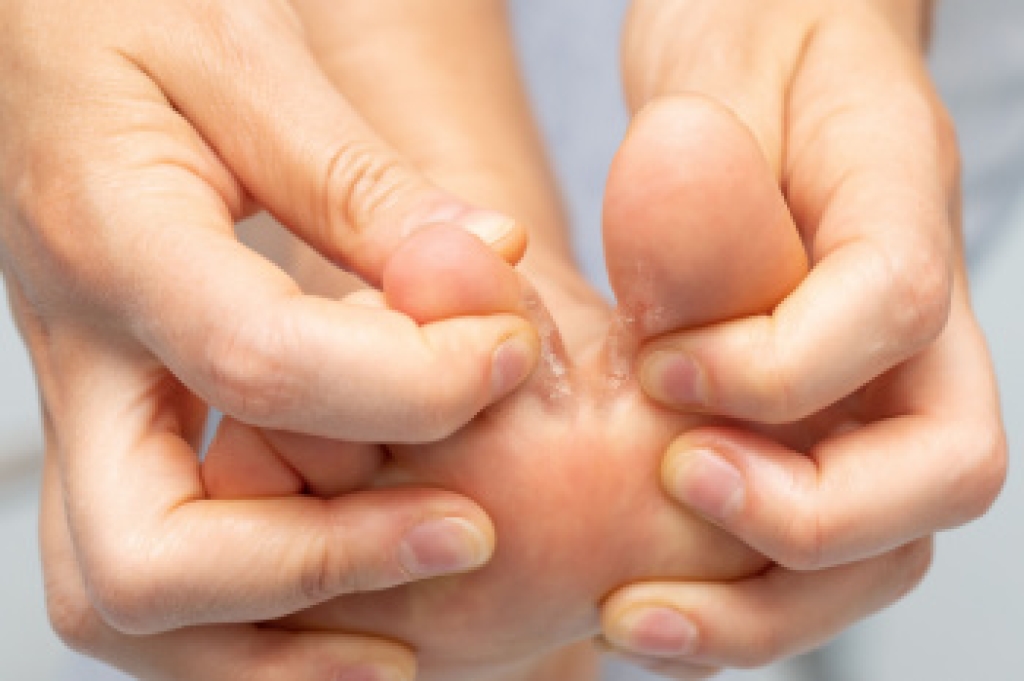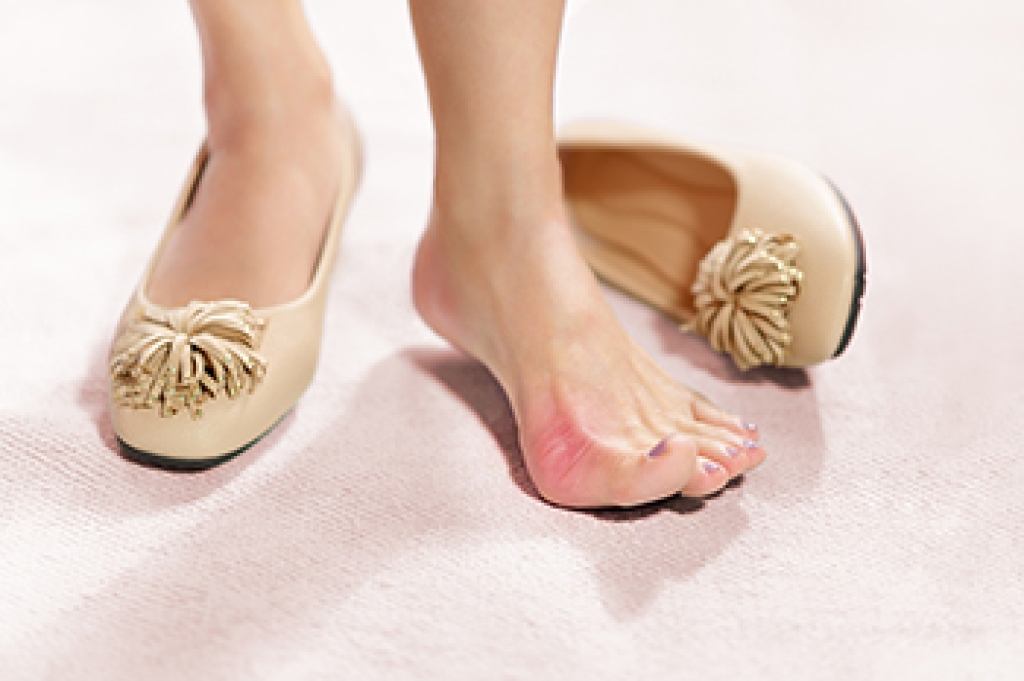
Both psoriasis and athlete’s foot can cause redness, scaling, and itching on your feet, making it challenging to distinguish between the two. However, understanding their differences can guide you toward proper treatment. Psoriasis is a chronic autoimmune condition that often presents as thick, scaly patches of skin, commonly on the soles. These patches may be silvery-white and are typically not contagious. Psoriasis often affects other areas, such as the elbows and scalp, and may be associated with nail pitting or discoloration. Athlete’s foot is a fungal infection that thrives in warm, moist environments. It causes peeling, redness, and itching, often starting between the toes. Unlike psoriasis, it is contagious and can spread in communal areas like gyms. If you have itching and redness on your feet, it is suggested that you schedule an appointment with a podiatrist for an accurate diagnosis and an effective treatment plan.
Athlete’s foot is an inconvenient condition that can be easily reduced with the proper treatment. If you have any concerns about your feet and ankles, contact Stephanie Tine, DPM from Flamingo Foot and Ankle. Our doctor will treat your foot and ankle needs.
Athlete’s Foot: The Sole Story
Athlete's foot, also known as tinea pedis, can be an extremely contagious foot infection. It is commonly contracted in public changing areas and bathrooms, dormitory style living quarters, around locker rooms and public swimming pools, or anywhere your feet often come into contact with other people.
Solutions to Combat Athlete’s Foot
- Hydrate your feet by using lotion
- Exfoliate
- Buff off nails
- Use of anti-fungal products
- Examine your feet and visit your doctor if any suspicious blisters or cuts develop
Athlete’s foot can cause many irritating symptoms such as dry and flaking skin, itching, and redness. Some more severe symptoms can include bleeding and cracked skin, intense itching and burning, and even pain when walking. In the worst cases, Athlete’s foot can cause blistering as well. Speak to your podiatrist for a better understanding of the different causes of Athlete’s foot, as well as help in determining which treatment options are best for you.
If you have any questions please feel free to contact our office located in Fort Lauderdale, FL . We offer the newest diagnostic and treatment technologies for all your foot and ankle needs.



